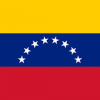Could anyone kindly advice me about the following problem:
We have to design storage of liquid butadiene in spherical tanks. The tanks will be filled from railcars unloading station. Butadiene will be pushed to the spheres by means of vaporized butadiene from another section. Liquid butadien from spheres will go to the production unit. Liquid butadiene with required purity will be delivered in railcars.
The problem is that butadiene used in vaporizer contains much more impurities than it is required by the process. Additionaly -> railcars unloading station already exist. The Client is using it for unloading "dirty" butadiene to another part of their plant. Now they want to use the same unloading station and the same pipes for railcars with "clean" butadiene. According to them new pipeline going to the spheres should be connected with their existing system which is now used for unloading "dirty" butadiene and will be still used.
They want me to prove them by some kind of calculation that impurities from pipes and dirty gaseous butadiene will not affect their "clean" butadiene for production. The requirements for the "clean" butadiene are in ppm. Also impurities in "dirty" butadien are specified in ppm. The test methods specified by the process owner are based on chromatography.
Is it reasonable to do any kind of calculation or simulation?
Could the purity of such mixed butadiene be cofirmed for sure even if one could build detailed model taking into consideration volumes of such system?
Regards.
Edited by wojtar, 14 December 2012 - 08:03 AM.

 FB
FB













